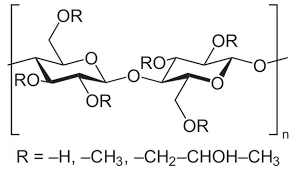
ნოე . 13, 2024 23:50 Back to list
hydroxyalkyl cellulose
The Versatile Applications of Hydroxyalkyl Cellulose
Hydroxyalkyl cellulose (HAC) is a unique derivative of cellulose, a natural polymer derived from plant cell walls. By introducing hydroxyalkyl groups into the cellulose structure, this compound exhibits enhanced solubility in water and various organic solvents. Due to its unique properties, hydroxyalkyl cellulose has found diverse applications in multiple industries, including pharmaceuticals, cosmetics, food, and construction.
One of the primary characteristics of hydroxyalkyl cellulose is its ability to form gels and films
. This property makes HAC an excellent thickening agent and stabilizer in various formulations. In the cosmetics industry, for instance, it is often used in lotions, creams, and shampoos to provide improved texture and consistency. Its film-forming capability helps enhance the sensory experience of the products while providing a protective barrier on the skin or hair.In pharmaceuticals, hydroxyalkyl cellulose is utilized as a binder and controlled-release agent in tablet formulations. Its solubility profile allows for the gradual release of active ingredients, improving the efficacy and bioavailability of drugs. Moreover, because HAC is derived from natural cellulose, it is considered safe for human consumption, making it an ideal choice for various pharmaceutical applications.
hydroxyalkyl cellulose

The food industry also benefits from this versatile compound. Hydroxyalkyl cellulose is recognized as a food additive, where it acts as a stabilizer and thickener in products like sauces, dressings, and dairy items. Its ability to enhance the texture and mouthfeel of these products is invaluable to food manufacturers striving to improve consumer satisfaction. Additionally, HAC can also serve as a low-calorie bulking agent in fat-reduced and calorie-reduced food products, catering to the growing demand for healthier alternatives.
In construction, hydroxyalkyl cellulose is employed as an essential component in cementitious materials. It acts as a rheology modifier, improving the workability and application of mortars and plasters. By controlling the viscosity of these mixtures, HAC facilitates better adhesion and performance in various building applications. Its water-retaining properties also contribute to the longevity and durability of construction materials, ensuring that they maintain their integrity over time.
Hydroxyalkyl cellulose is not without its challenges. While it offers numerous advantages, its behavior in certain applications can be influenced by factors such as temperature, pH, and concentration. Therefore, extensive formulation and testing are necessary to achieve the desired outcomes in specific applications.
In conclusion, hydroxyalkyl cellulose stands out as a multifunctional additive with a wide array of uses across several industries. Its unique properties not only enhance product performance but also contribute to creating safer and more effective formulations. As research continues and innovations emerge, the potential applications of HAC are likely to expand even further, solidifying its importance in the realms of science and technology. Whether in cosmetics, pharmaceuticals, food, or construction, hydroxyalkyl cellulose is undoubtedly a valuable resource shaping modern products and solutions.
-
Versatile Hpmc Uses in Different Industries
NewsJun.19,2025
-
Redispersible Powder's Role in Enhancing Durability of Construction Products
NewsJun.19,2025
-
Hydroxyethyl Cellulose Applications Driving Green Industrial Processes
NewsJun.19,2025
-
Exploring Different Redispersible Polymer Powder
NewsJun.19,2025
-
Choosing the Right Mortar Bonding Agent
NewsJun.19,2025
-
Applications and Significance of China Hpmc in Modern Industries
NewsJun.19,2025







